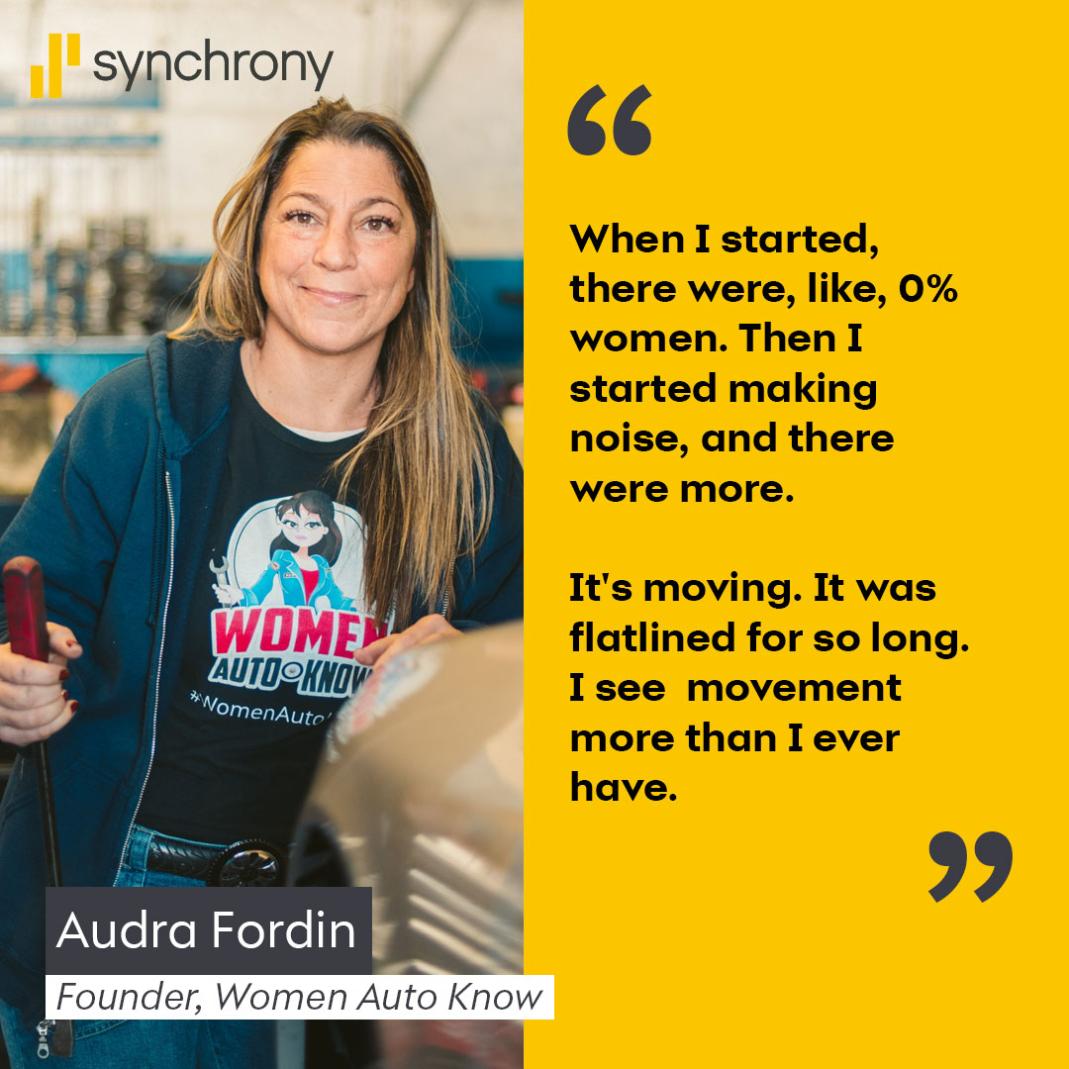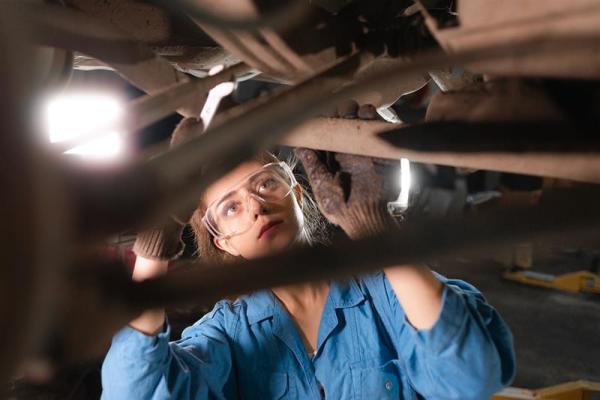Article
January 23, 2024, 2:00 PM EST
Strategies for Change: How to get more women working in the auto industry

This article is the second of a three-part series, Women in Car Care, which details the challenges and opportunities for women in the automotive industry. By exploring recent statistics and speaking to women currently in the industry, the series highlights the evolving landscape and the tremendous potential for women to shape the future of car care.
When Audra Fordin first started working in the automotive industry, she immediately felt unwelcome. Inappropriate pictures of women hung in workstations. One of the bathrooms didn't have a door, making it awkward to use or walk past. She even wore baggy clothes to avoid unwelcome comments.
As a fourth-generation auto-industry worker, Fordin knew she belonged. But it was only when she took over her family's repair shop that she was able to build a work environment she felt comfortable in. Though the changes she made weren't always well-received, she felt proud of them—and was convinced she was doing the right thing. "I was always challenged as a leader," she says. "It fired me up and made me want to do more."
The fact is, the auto industry needs more people like Fordin. There's a serious shortage of auto technicians—demand is outpacing supply by a ratio of nearly 5 to 1—and yet women make up only 12.1% of the automotive repair and maintenance industry. Additionally, only 5% of auto repair shops are owned by women. Not only will bridging this gap help the industry meet demand and maintain profitability, but welcoming more women into the field broadens the career possibilities of half the population.

How do we get there? Here are some key strategies to consider.
Strategy #1: Leading by Example
Many companies have policies in place when it comes to diversity, equity and inclusion (DEI). But when it comes to results, not everyone is on the right track. According to one 2020 study of 2,000 female auto professionals, only 39% said they'd seen improvement when it came to attitudes toward women in the workplace, a sharp decline from similar studies in 2015 and 2018. And almost half said that if they could start again, they'd pick a different field entirely.
What will it take at the organizational level to create more supportive cultures and make female employees feel valued as professionals? One simple step is to appoint more women in top management positions, which research shows is linked with fewer gender stereotypes in the workplace.
This shift is already happening at some of the big automakers. Thirty percent of top management positions at GM, for instance, are now held by women. And Toyota's manufacturing facilities in Mexico have doubled the percentage of female team leaders from 7% to 13%.
Strategy #2: Recruiting with a Purpose
To bring more women into the automotive industry, it's not enough to create diversity policies and wait for them to show up. Creating outreach and incentives is what will make change happen, like these examples.
Scholarships
The inability to pay for education is a major barrier for many Americans. One support mechanism that can help is scholarships. Scholarships have been shown to boost attendance and completion of higher education, especially among marginalized groups.
Creating and expanding dedicated scholarship programs for women in the auto industry is a huge opportunity to draw in more female employees. The Automotive Women's Alliance Foundation, for example, offered $569,500 to 224 recipients in March 2023 alone. Graduates who have received its scholarships in the past have pursued advanced degrees, completed internship programs and excelled in automotive roles from management to manufacturing.
Internships
Recruitment initiatives are coming from automakers, too, via brand-specific training programs like apprenticeships and internships that are often pathways to full employment. Internship programs at Volkswagen brand Škoda, for instance, integrate diversity workshops into their educational programming with the goal of producing a "gender-balanced" company. And Tesla's eight-week Pathway to START internship prepares members of underrepresented groups and communities to enter its full career training program.
Training Programs
State and federal governments are stepping up, too. New York, for example, opened a $30 million, 167,000-square-foot center that will host 25 training programs including automotive technology, auto body collision repair and refinishing, while in Illinois, higher education is becoming more accessible and affordable for those pursuing automotive certifications or degrees thanks to a $100 million investment.
Strategy #3: Socializing Role Models
With a concerted effort from everyone involved, it is possible to bring more women into the auto industry—and make them feel welcome, too. But it's going to take strong leadership to make gender parity a reality.
Luckily, there are role models in the workplace who are building a better playing field for all aspiring auto industry workers. Take Fordin, who acts as a leader not only in her own shop, but in the general marketplace as well. She offers webinars and online workshops to help consumers learn more about their cars—both to do good, and to help grow her business.
And she's seeing positive signs of change. One of her workshop participants, for instance, was able to jump-start a battery at the supermarket—with her young child watching. That's a meaningful moment of representation, and Fordin hopes to create more of them through her work.
"When I started, there were, like, 0% women," she says. "Then I started making noise, and there were more. It's moving. It was flatlined for so long. I see movement more than I ever have."
Looking to learn more about women in the auto industry? Continue to Part 3 of Synchrony's Women In Car Care series, "The Role of Building Community for Women in the Auto Industry," or jump back to Part 1, "How Reducing the Gender Gap Can Strengthen the Auto Industry."






